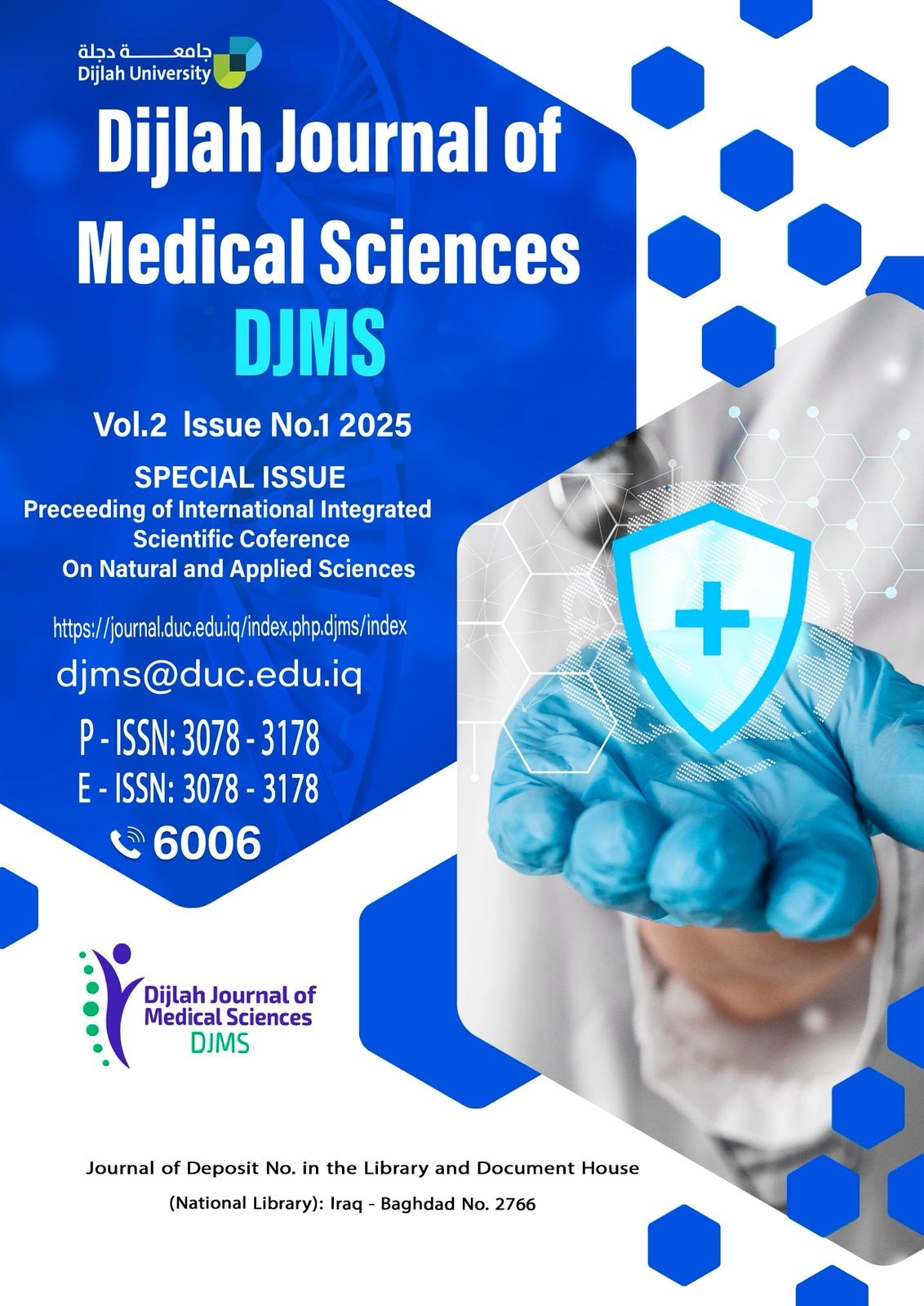pdf Exploring the Link Between Helicobacter Pylori Infection Severity and Metabolic Disruptions: The Role of IL-17F as a Key Biomarker
Waleed Al Jubouri, Ajile Al Zamily and Osamah Muslim
DOI:
https://doi.org/10.65204/DJMS-ELBHPIKeywords:
Helicobacter Pylori, Metabolic Disorder, Interleukin, Diabetic, InfectionAbstract
Helicobacter pylori is a Gram-negative, microaerophilic bacterium that colonises. Aims to evaluate the relationship between H. pylori infection severity and metabolic disorder. A case-control study was conducted with 180 patients, who were divided into three groups: (Group 1) severe gastritis, (Group 2) moderate gastritis, and (Group 3) healthy controls. In serum, H. pylori was detected using nephelometry immunoassay, and enzyme-linked immunoassay (ELISA) determined interleukin-17F (IL-17F). The severe gastritis patients had significantly higher H. pylori levels compared to those of moderate gastritis patients (mean difference: 47.083 AU/ml, p < 0.05) and healthy controls (mean difference: 117.033 AU/ml, p < 0.05). The control group had significantly lower amounts of H. pylori than those in the moderate gastritis group (mean difference: -69.950 AU/ml, p <0.05). The levels of IL-17F were also significantly higher in the severe gastritis group than the moderate gastritis group (mean difference: 27.9467 ng/ml, p < 0.05) and the control group (mean difference: 59.9967 ng/ml, p < 0.05). The levels of HbA1c in the severe gastritis group were higher than those in both the moderate gastritis group (mean difference: 3.1217%, p <0.05) and the control group (5.0883%, p <0.05). The mean levels of RBS in severe gastritis were higher compared to both moderate gastritis (51.800 mg/dl, p < 0.05) and the control group (122.833 mg/dl, p < 0.05). Results revealed that higher infection severity resulted in higher concentrations of these markers, indicating the contribution of H. pylori to metabolic dysfunction and immune response. These results underscore the need for H. pylori eradication to enhance metabolism and immunity.

